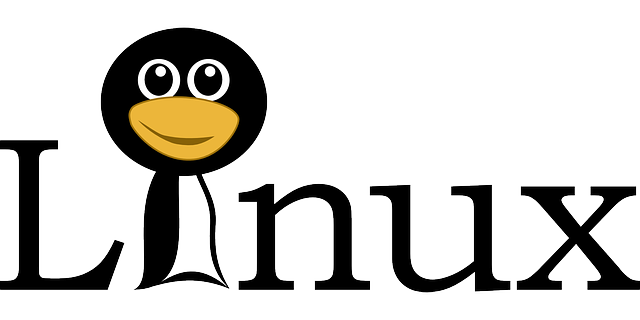Category: Tiny Core
#Tiny Core: An Introduction to the Lightweight Linux System
Tiny Core is a popular Linux distribution known for its incredibly small size and lightweight design. At just 15 MB, it’s one of the smallest Linux systems available, making it a favorite among developers, embedded systems, and those seeking a minimalist operating system. In this article, we’ll dive into the world of Tiny Core, exploring its features, use cases, and benefits.
##What is Tiny Core?
Tiny Core, also known as TC, is a minimalist operating system built on the Linux kernel. It was first released in 2009 by Robert Shingledecker and is currently maintained by the Tiny Core Linux team. The philosophy behind Tiny Core is to provide a basic, secure, and fast operating system with a tiny footprint. It follows a “Core Plus” model, meaning users can choose to add additional software on top of the base system as needed.
The system is so small that it can easily fit on a USB drive, making it incredibly portable and versatile. It offers a graphical user interface (GUI) based on the FLTK toolkit, allowing even novice users to navigate and use the system with ease.
##What Makes Tiny Core Unique?
While there are other minimal Linux distributions available, Tiny Core stands out for its unparalleled small size. Its core installation includes only the essential components, including the kernel, shell, and package manager, leaving it up to the user to add the necessary software for their specific use case.
One standout feature of Tiny Core is its customizable extension system. Users can add or remove software packages as needed, making the system incredibly flexible and efficient. Additionally, the system’s runtime is entirely out of RAM, providing faster performance and lower disk space usage.
##Use Cases
Tiny Core is best suited for users who prefer a minimalistic approach to their operating system, such as web developers, system administrators, and embedded systems. Its small size and customizable nature make it perfect for creating a specialized and lightweight system tailored to the user’s needs.
For developers, Tiny Core offers an ideal platform for experimenting and testing code with its low overhead and fast boot-up time. System administrators will appreciate the simplified maintenance and security features, while embedded systems can benefit from Tiny Core’s small footprint and minimal resource usage.
##Benefits of Tiny Core
The most significant advantage of Tiny Core is its small size and customizable nature, allowing users to tailor it to their specific needs. With a smaller installation size, it requires less memory, making it an attractive option for resource-constrained devices. This feature also makes it an ideal platform for virtual machines, allowing users to run multiple instances without significant performance issues.
Its portability and runtime from RAM make Tiny Core a reliable and fast option for systems with limited storage, making it an excellent choice for bootable USB drives and network boot environments. Additionally, its efficient resource usage makes it an environmentally-friendly choice, reducing the carbon footprint of both the user and the system.
##Getting Started with Tiny Core
Tiny Core offers a range of installation options, including a full installation, a minimal installation, and a custom installation using their online package browser. The simplest way to get started is by downloading the ISO image from their website and creating a bootable USB drive. Once booted, the user can explore and customize their Tiny Core system.
##Support and Community
Despite its small size, Tiny Core has a thriving and active community of users and developers. The community provides support through forums, wikis, and blogs, making it easy to get help and contribute to the development of the system. The team regularly releases updates and improvements, ensuring that Tiny Core remains relevant and secure.
##Final Thoughts
Tiny Core is a powerful, lightweight, and customizable operating system that stands out in the world of Linux distributions. Its small size, fast performance, and customizable nature make it an excellent choice for developers, system administrators, and embedded systems. By providing a basic, secure, and fast platform, Tiny Core allows users to build a specialized system tailored to their specific needs. So, why not give it a try and experience the power of Tiny Core for yourself!
##Frequently Asked Questions:
###Q: Can I use Tiny Core as my primary operating system?
A: While possible, it is not recommended to use Tiny Core as a primary operating system for everyday use. It is best suited for specific use cases and may not provide all the features and functionality of a traditional desktop operating system.
###Q: How often are updates and new releases available for Tiny Core?
A: The Tiny Core team releases updates and new versions regularly, depending on the need for security patches and improvements. Users can choose to upgrade to newer versions or stick with their current installation as long as it is supported.
###Q: Can I install third-party software on Tiny Core?
A: Yes, Tiny Core offers a comprehensive repository of extensions that users can add to their system. Additionally, with the help of the CorePlus installer, users can add third-party software outside the core repository.
###Q: Is Tiny Core suitable for gaming?
A: No, Tiny Core does not support gaming as it lacks the necessary drivers and infrastructure for graphics-intensive tasks.
###Q: How can I contribute to the development of Tiny Core?
A: Users can contribute to Tiny Core by reporting bugs, providing feedback, and submitting code to the project’s GitHub repository. Volunteers can also help with documentation and support on the community forums.
Tiny Core Linux 6.4.1 Gets Its First Release Candidate Build with Multiple Fixes – Softpedia News
Robert Shingledecker has had the pleasure of informing us about the immediate availability for download and testing of the first Release Can…….
How to install Tiny core Linux on VMware Player? – Linux Shout
Tiny Core is a small Linux Distro with a size of 16 MB only, thus in this modern world, it is really quite a small operating system. Therefore, we ca…….
Testing Tiny Core Linux | Linux Addicts – Linux Adictos
I had a feeling that this Tiny Core Linux It was a good thing and no, not because it doesn’t weigh either, I mean, it’s also something brilliant, …….
“Master the Power of Tiny Core Linux 6.4 | The Ultimate Resource for Linux Enthusiasts – Linux Devotees Unite”
Tiny Core Linux has released a new version, version 6.4 that includes some minor changes in this very low-resource distribution.
For a few da…….
Tiny Core Linux 15 stuffs modern computing in a nutshell – The Register
Tiny Core Linux shows that a fully functional, GUI-driven Linux distro can be smaller than Windows 95 and still be modern and useful.
Version 15 is o…….
Tiny Core Linux is the smallest Linux distribution on the market with a big heart – TechRepublic
The Tiny Core desktop is as minimal as it can get while remaining functional.
One thing that makes Linux special is that there’s a distri…….
“Unleash the Full Power of Linux with Tiny Core Linux 13.0 – Only 22 MB for a Complete Desktop Experience”
Most Linux-based operating systems are fairly large — usually well over a full gigabyte in size for the base install image.Tiny Core Linux, which c…….
“Unleashing the Power of Tiny Core Linux 15.0: A Revolutionary Step in the World of Minimalist Computing – BNN Breaking”
In a world where digital bloat seems almost inescapable, a beacon of simplicity shines b…….
Revamp Your Old PCs: Tiny Core Linux 15.0 Takes on Windows 11 – BetaNews
Tiny Core Linux 15.0 has been officially released. This latest version of the minimalist operating system challenges the dominance of …….
“Revolutionize Your Computing Experience with Tiny Core Linux: The Incredible 10 MB Linux UI Desktop – CNX Software”
If you are looking for a small footprint Linux distribution, you may be interested in Tiny Core Liunx. Here’s the description on Tiny Core Linux …….



























